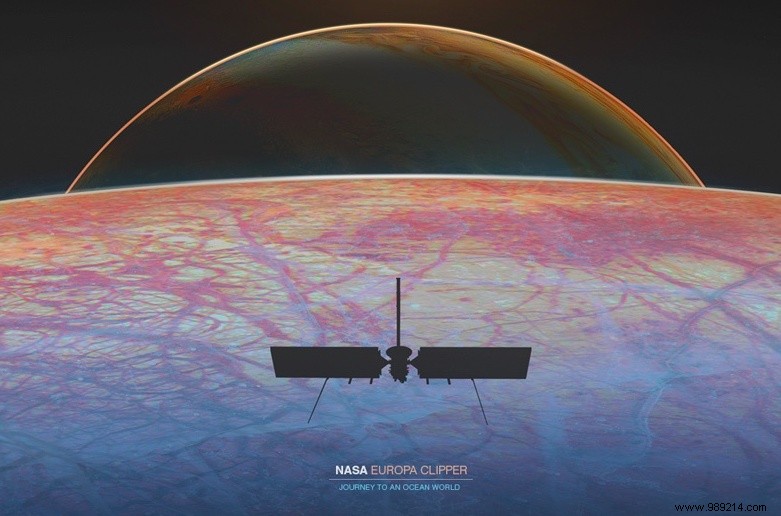The Europa Clipper mission was originally scheduled to be launched by NASA's massive SLS rocket in 2024. Eventually, agency officials settled on a commercial solution , the NASA rocket does not currently offer all the necessary guarantees. And inevitably, the travel time will no longer be the same.
In 2019, NASA confirmed its intention to explore Europa. We know that the moon has a global ocean under its surface. initially salty. On the other hand, we do not know for the moment if this water is capable of sustaining life. To try to determine it, NASA is preparing a mission called Europa Clipper .
The idea is to send a probe into the Jovian system for four years where it can perform several dozen low-altitude overflights of Europa (from 2,700 to 25 kilometers above sea level), studying its icy surface with each passage.
Another major objective of the mission will be to take detailed images of the moon's surface. In this way, researchers will be able to select possible sites for further exploration in the future.
The probe was normally scheduled to be launched in 2024 by the SLS launcher of NASA which must bring humans to the Moon as part of the Artemis program. At least, that's what the US Congress originally dictated. If so, the probe should have arrived in the Jovian system about three years later.
However, the delays experienced during the SLS test campaign (not to mention the cost overruns) ultimately led NASA's planetary mission program managers to change their plan. The mission will therefore no longer be launched by the SLS, but by a private rocket according to mission project manager Bob Pappalardo. On the other hand, the first available SLS vehicles will be used in the Artemis program.
While the original Congressional proposal stated that SLS should be used "if available", it did indeed leave the door open for a commercial alternative.
It is not yet known which company will be chosen. NASA leaves itself in fact about a year to decide. A priori, the "match" should be played in the Falcon Heavy from SpaceX and the Delta IV Heavy , from United Launch Alliance.

Whichever rocket you choose, Clipper's journey to Jupiter will ultimately be very different than it would have been with an SLS. NASA's heavy launcher would have made it possible to launch the probe on a direct trajectory, with an expected arrival less than three years after take-off .
Other launchers available are not robust enough for this travel plan. Also, rather than taking a direct path, the mission will have to perform flybys of Mars and Earth (gravitational assistance), respectively in February 2025 and December 2026, to allow it to gain speed.
In this way, the probe will no longer arrive less than three years after take-off, but about five and a half years later, between 2029 and 2020 .